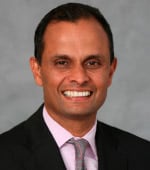INCREASED COMPETITION IS THE MOTHER OF INVENTION
By Rob Daly
Transaction banks are working hard to be more agile and innovative in meeting corporate treasury needs. Some are succeeding better than others, and those that push boundaries may end up on top in an increasingly competitive marketplace.

Facing a poor global economic outlook and seeking to recapture investments they made to meet a level of new regulation unseen since the Great Depression, transaction banks are bringing their “A” game like never before.
The way that banks look at technological development is changing. All banks, of course, look first at what they need to spend on regulatory investments. All of the big banks naturally keep an eye to the latest market developments and spend some of their investment dollars on ensuring they are keeping up with the Joneses. Most banks also make use of client panels—or client feedback in one shape or another—to help inform investment decision-making.
These are the three key mechanisms by which most transaction banks allocate tech spending. But some banks are adding in another layer to the development process—setting up cross-functional internal teams to focus on new and pioneering technologies. Some are bringing in leaders to help build a culture of innovation throughout the organization. Many are reaching out to external tech firms to help them innovate.
Some banks are even going as far as to adopt an incubator approach—creating a sandbox environment (meaning a distinct unit with separate funding not tied to the rest of the organization) for the development of creative solutions to current problems. These solutions may not flourish, but they are given a chance to bud—and succeed or fail based on their respective merits.
Regardless of their approach, most transaction banks are starting to become more flexible and agile in how they roll out new solutions. Old business models and offerings are being retired as banks reorganize their businesses to meet corporate treasuries’ needs and demands in a quicker and more agile manner.
Each bank approaches innovation differently, but all share a common characteristic. Whether it is setting up a CEO-led central process improvement program that lets all employees contribute improvement ideas, like Singapore bank DBS did, or conducting client forums and participating in benchmarking exercises like the Royal Bank of Scotland did, it is all about breaking down walls to communication and encouraging dialogue.
WHY DIDN’T WE THINK OF THAT?
As transaction banks improve their efficiency, standardize their technology base and adopt best practices from the consumer side, they reap more time to innovate. But corporates should not expect their banks to develop the next game changer like the iPhone, notes Steven Murphy, research director at industry advisory firm CEB TowerGroup. “That’s not what banks do,” he adds. “Innovation in commercial banking means making it easier to do business—receive information faster—and improving reliability. It also means connecting to the client through any channel they choose.”
 |
|
Rosenthal, SWIFT: Young executives joining treasury are more comfortable using new technologies and social media |
Multiple-channel support is growing in importance as corporate new hires in the finance department—often fresh from college—are more comfortable using technology and social media, says Stacy Rosenthal, a senior business manager at the global banking cooperative SWIFT.
These sorts of demands led J.P. Morgan to develop The Community, a YouTube-esque platform where clients can go for a self-paced education on a variety of topics. “You can take a three-minute ‘snack’ around the specifics of a foreign exchange transaction, so that you do not have to labor through a 40-minute or two-hour online training course,” says Lloyd O’Connor, managing director and global head for J.P. Morgan ACCESS.
Improving user experience is a clear focus right now. “The days of organizations offering white-labeled products without a common ‘look and feel’ across various transaction services have fallen by the wayside,” notes Rosenthal.
Some innovation might be a result of linear development—for example, easing use by providing a single sign-on for a portfolio of applications—but often it is not. “When we developed the ability to deposit checks by photographing them some years ago, it arose out of solving an onboarding issue,” notes O’Connor.
Deutsche Bank started realigning its global transaction banking business in July 2012, when the group named Rhomaios Ram, then a managing director at GTB, to be the business’s CIO—reporting directly to Werner Steinmueller, member of Deutsche Bank’s group executive committee and head of GTB. “Now our team of developers is much closer to the product’s end-users and researchers, which has made a major difference in how Deutsche Bank thinks about developing its products,” says David Watson, head of global client access product management, GTB, at Deutsche Bank, who reports to Ram.
 |
|
O’Connor, J.P. Morgan: Banks must not be blinded by their own science, they should partner externally when necessary |
For other banks it is a matter of striking the proper balance between business-line IT teams, group-level innovation units and those IT teams working across the bank to develop common foundations, says Gautam Jain, global head of client access, transaction banking at Standard Chartered.
Such cross-team alignment makes it easier for firms to be agile in product development: Developers can work closely with end users on successive designs that eventually evolve into a finished product. Technologists appreciate this development model for its speed and adaptability when project requirements change.
But this does not solve all the challenges in trying to innovate and adjust quickly to market demands, according to Jain. “Agile development is more suitable for the early phases of smaller projects in which user requirements are hard to define and when users and IT people are located in the same place.”
For larger projects, banks still, understandably, often follow a more staid, proscribed development model. Standard Chartered typically uses the “waterfall” development model, which begins with all of a product’s requirements defined before flowing into subsequent design, implementation, verification and maintenance phases. By dealing with an issue during its appropriate phase, it is less expensive than addressing it in a later phase. “We are an international organization with a wide-ranging footprint; this approach ensures good coordination of split teams and good user engagement early in the life cycle from the right locations,” Jain adds.
THE CONSUMER IS ALWAYS RIGHT
Much of what is in the pipelines of the leading transaction banks will have a familiar look and feel to most people in corporate treasury, as banks leverage the consumer market experience. “Best practices in engaging in product design, development and delivery typically come from the consumer market unless it is bespoke client requirements,” says Watson.
When the transaction banks do not have the specific consumer expertise internally, they consult clients with technical aptitudes and Silicon Valley firms specializing in the consumer market that possess the expertise. According to O’Connor it is important not to be blinded by one’s own science—meaning firms should be open to using best-of-breed external providers. Yet, his firm still engineers most of its technology internally.
Deutsche Bank’s GTB is in the midst of moving its 67 online products, including its flagship db-direct internet platform, to the bank’s new Autobahn App Market. Its corporate banking and securities business first developed the AAM delivery channel, which is now being rolled out bankwide, except for the bank’s retail banking business in Germany, Italy and Spain.
By using a standard architecture, which is included in the bank’s app development kit, Watson’s team has shaved significant time from product development since “approximately 60% to 70% of a new technology can be leveraged ‘off the shelf.’”
J.P. Morgan and Standard Chartered also use a “develop once and deploy to many” philosophy to meet client demand and avoid reinventing the wheel, which often includes the use of open-source technology.
Notes Standard Chartered’s Jain: “We make our channel product agnostic so we can enhance our products and services with ease while sustaining resilience.”
| Bank | Major Innovations Launched Over The Past Year | What Stands Out | What The Future Holds |
| Bank of America Merrill Lynch | New additions to its CashPro® Online solution | Delivery of real time email notifications to beneficiaries as a part of the payment process, providing detailed remittance data via attached documents such as invoices and spreadsheets. User-defined fields feature within the online payment service, so users can enter general ledger or other key internal identifiers, to help reconcile transactions and improve overall payment workflow. New multichannel client experience. Immediate feedback on payment formatting errors as 100% of online transactions are being verified against straight-through processing rules. | FX Trade Anywhere Settle Anywhere effort will offer the ability to book a trade on a variety of channels (phone, CashPro FX, multibank third-party trading application) and settle those trades on a variety of payment channels: Global Payments, CashPro Connect or SWIFT. |
| Barclays | Barclays Pingit mobile payment offering for corporates | The UK’s first service for sending and receiving money using mobile phone numbers. Delivers benefits to corporate treasurers—such as irrevocable and instant collections, the ability to receive richer, more meaningful data, a new channel to reach customers and be reached through—and challenges the existing reliance on legacy payments, such as cash and check. | Adding functionality to Barclays Pingit: Improving the versatility of the platform, delivering a richer B2B2C channel, Also: Further roll out of corporate e-banking platform, Barclays.Net, and a portal offering which provides a single sign-on solution across all products and services. |
| BNP Paribas Securities Services | Information Intelligence solution | Analytics system with unified access to information; a semantic engine to improve the search function; predictive analytics to detect opportunities and threats; and “business user discovery” to identify anomalies, trends, relationships. | |
| Citi | Citi(R) Mobile Collect | A secure mobile solution to settle funds in real time at the point of sale, with immediate confirmation to both buyer and seller. The solution streamlines collections and reconciliation, and accelerates receivables collections to reduce DSO. It increases the velocity of the cash conversion cycle, using device-agnostic mobile phone and messaging technology to initiate, approve and confirm transactions in real time. | Continued rollout of Citi(R) Mobile Collect across Asia-Pacific and into Latin America. Citi is also investing in, and piloting, a variety of m-payables and m-receivables services in targeted markets around the world. |
| Citi Commerce Services | One-stop consumer payments service for institutional clients. The service allows merchants to sell their goods and services via their websites in local currency by connecting through one gateway and one bank across the globe—Citi. With one connection and one bank relationship, merchants can accelerate revenues globally and eliminate the lengthy process of establishing country-specific banking relationships. Users can quickly and efficiently gain access to a broader consumer base. | Citi Commerce Services is now available in Mexico and eight markets in Asia-Pacific and will be rolled out in over 40 countries globally by the end of 2014. | |
| DBS | Launched new regional corporate internet banking platform, IDEAL™ 3.0 | Region-specific solution; customer-centric interface based on customer usability studies. Intelligent Transfer Wizard identifies the appropriate payment type; customizable dashboard with one-click access to statements, remittance advice and for transaction approvals. Seamless access to DBS DealOnline for treasury FX services and IDEAL™ SFS securities and fiduciary services platform, among other solutions. Seamlessly integrates with ERP systems. | Enhancing IDEAL™ platform to enable a user-determined approval workflow depending on the authorization limit. Increasing online security: enhancing IDEAL™ with intelligence to monitor login and transaction patterns. Improving payment transparency. Simplifying account-opening procedures. |
| Deutsche Bank | Autobahn App Market’s Global Transaction Banking Solutions | Launched the industry’s first App-based, open-source platform providing a single access point to Deutsche Bank’s electronic products, services and intellectual property. Apps related to transaction banking range from fund administration, trade instruction and liquidity management, to securities lending and financial supply chain management. Clients can also access research, commentary, pricing, analytics and execution tools. Apps can seamlessly interact with each other. The Autobahn Development Kit and associated User Interface and User Experience Style Guide provide open-source development tools to enable rapid web App development. | GTB’s db direct internet (db di) offering will become available via the Autobahn App Market. The new Cash Manager App will provide relevant information via a user-friendly dashboard, allowing users to create, authorize and reconcile payments. It will provide consolidated overviews of balances for accounts |
| HSBC | RMB Payments & Collections Solution | Enables a multinational’s Chinese subsidiaries to settle cross-border payments and collections in renminbi with their parent company’s overseas treasury center. Eliminates foreign exchange exposure and optimizes liquidity management. | |
| J.P. Morgan Treasury Services | Network Check Conversion |
Converts a client’s check disbursements from paper to image and then efficiently routes the electronic payment and remittance details to the lockbox of a J.P. Morgan receivables client, reducing payment distribution costs and reducing paper handling costs for the receiver. |
Continue network mapping of J.P. Morgan’s global community. Further enhancements to institutional mobile offering, and roll-out of new solutions spanning core cash management, liquidity and trade. |
| J.P. Morgan ACCESS® | Cloud-based online global cash management portal. | ||
| Image Deposit Direct mobile | Mobile check image capture for clients to allow distributors to digitize expensive and risky check collection. | ||
| Royal Bank of Scotland | New SCF, trade finance and e-Invoicing solutions | Launched Direct Presentation program to ease the letter of credit process by allowing users to accelerate payment. Users can upload images of their documents to RBS, enabling swifter supply and release of a cover letter addressed to an issuing bank, thus speeding identification of document errors and reducing overall processing time. Also, the bank improved integration of its MaxTrad SCF and e-Invoicing solutions to increase automation end-to-end. | |
| RBS Citizens | accessPAYMODE-X | Launched e-payables solution that allows companies to pay suppliers/vendors electronically. It lets enrolled customers receive a payment back when they issue a payment to a vendor, rather than paying a fee to issue a payment, thus creating a new revenue stream for users. This aligns with corporate revenue-capture efforts, and the efficiencies arising from migrating away from check payments to e-payments also reduce staff and processing costs, and errors. Reduces the risk of fraud with best-practice security solutions, including a 3-step supplier authentication. | Launching accessMOBILE II, the bank’s second generation corporate mobile banking offering. Upgrades include allowing transaction initiation and approvals. Also, in e-payables the bank is creating more integrated, end-to-end procure-to-pay mechanisms for e-payments and enhancing corporate card capabilities. |
| UniCredit | SEPA Mandate Management system | Portal solution to administer SEPA mandates and create SEPA direct debits. This includes the migration of legacy mandates by importing CSV or DTAUS-files. Can also convert DTAUS-files containing direct debits to SEPA compliant direct debit collections during migration period of a company’s payments systems. A fully integrated interface to Multiversa will be provided. At the start the system will be offered in UniCredit Germany and UniCredit Italy. | |
| “Virtual Account” solution for payments management | Geared towards payment factories and in-house banks for supplier payments, the solution, launched in 2013, can also be used for other payments, such as managing wages, collections (direct debits), etc. Companies can reduce number of bank accounts, increase transparency, avoid account balances or need for cash pools, optimize payment flows, increase matching rates. Uses an IBAN, supports cross-border payments, SEPA compliant. |




